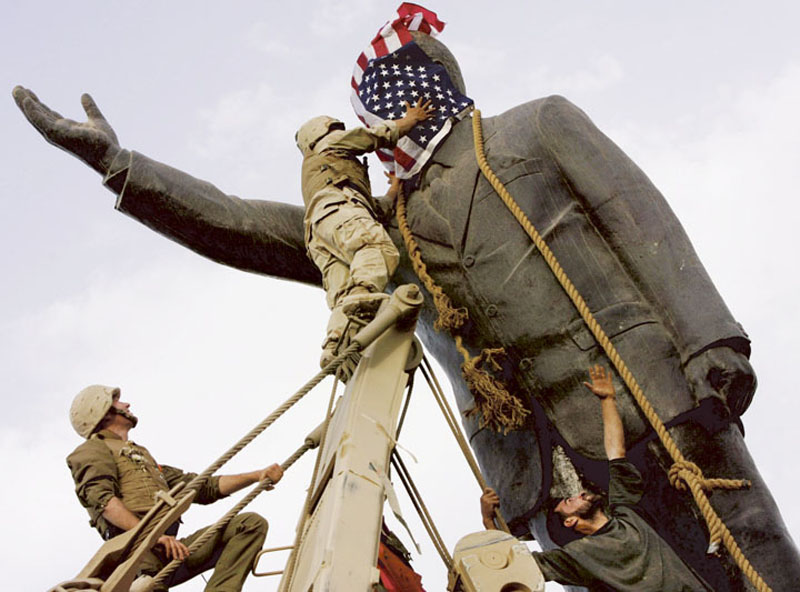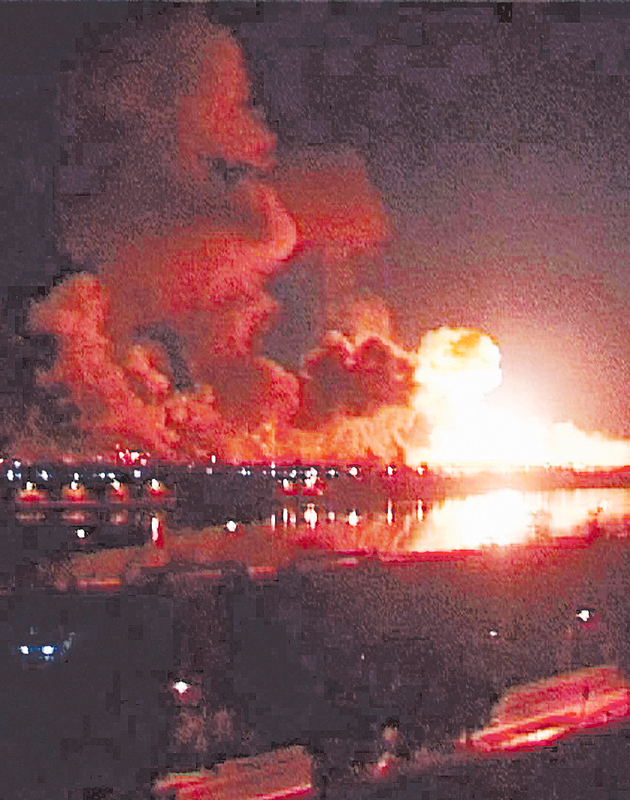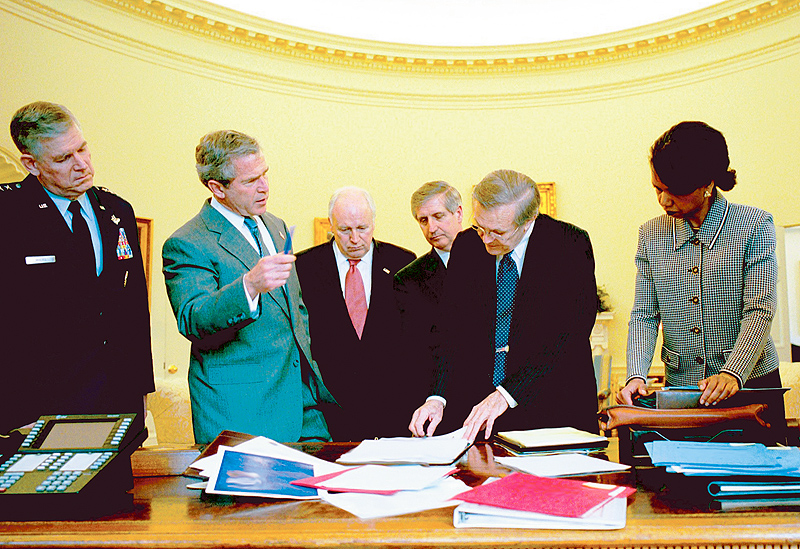Last week, American households were blanketed with a torrent of coverage, commentary and regret regarding the 10th anniversary of the war in Iraq. Liberals claimed that Twitter — if it had existed — could have stopped the invasion. Conservatives argued that the links between Saddam Hussein and terrorism have, in fact, been underplayed.
There are many lessons of Iraq. The most glaring one is that an American ground invasion destabilized the Middle East instead of stabilizing it. In a brutal, nine-year conflict, 100,000 Iraqis died, 4,500 American soldiers perished and over $1 trillion was spent.
Such extraordinarily high human and financial costs should have slowed what Tufts University professor Daniel W. Drezner calls the “creeping militarization of American foreign policy.” Instead, the civilian American institutions that failed us before Iraq have grown even weaker over the last decade.
The State Department is the first example. Drezner correctly argues that the Pentagon’s influence over foreign policy steadily increased as its post-Sept. 11, 2001, budget ballooned. Military intervention was too often seen as the only way the United States could influence events overseas.
That trend has slowed in the Obama administration but the budget, training programs and planning capabilities of the State Department are still laughably small compared to those of the American military. Money equals power, influence and a seat at the table in Washington. As one former national security reporter put it to me, weak civilian institutions mean fewer civilian responses to crises.
In a speech last month, Secretary of State John Kerry tried to put the small size of the State Department in perspective. He said a recent poll found that most Americans believe the State Department and U.S. foreign aid programs consume 25 percent of the federal budget. In fact, they receive 1 percent. (The military gets roughly 20 percent.)
Kerry’s speech, his first major foreign policy address, received little press coverage. That is a reflection of a second American civilian institution that is failing us a decade after Iraq: the press.
Last week, commentators rightly lambasted the media for not being more skeptical of the Bush administration’s central justification for invading Iraq: weapons of mass destruction that turned out not to exist.
In the months before the invasion, the New York Times published a series of exaggerated WMD stories by reporter Judith Miller on its front page. At the same time, editors at the Times and other mainstream outlets largely ignored intrepid reports by Knight-Ridder newspapers that questioned the administration’s WMD claims.
Ten years later, Miller is a Fox News contributor, and the Knight-Ridder chain no longer exists. A depressing report released by the Pew Research Center last week found that the full-time professional editorial staff at newspapers has declined by 24 percent since 1989. A separate analysis found that the ratio of public-relations workers to reporters grew from 1.2 to 1 in 1980 to 3.6 to 1 in 2008.
Some analysts contend that the rise of the Web and social media, in fact, is improving journalism. Eric Boehlert of Media Matters argued last week that Twitter — if it had existed — would have forced mainstream reporters to do a better job before the Iraq invasion. He cited recent cases of criticism on Twitter forcing some mainstream newspaper columnists to update their pieces.
Jonathan Landay, one of the Knight-Ridder reporters whose stories questioning the evidence of WMD in Iraq received little attention, said social media might have made a difference. But he hesitated to say Twitter would have restrained the White House.
“Had the New York Times, Washington Post and the networks done the kind of reporting that we had, could the administration have been able to take the country to war? I don’t know,” Landay said in an email message. “But social media would have brought far more attention to our work, and perhaps more journalists would have followed our lead.”
Landay, a former colleague and longtime friend who now reports for McClatchy, said the news media and American intelligence agencies failed. “The mainstream news media was as egregious in its failure to do its job,” he said, “as the U.S. intelligence community was in its failure to produce accurate intelligence on Iraq’s non-existent WMD.”
Today, fears of “another Iraq” dominate American foreign policy. The choice for policymakers is binary. The United States can respond to a foreign policy threat by launching a risky invasion or doing nothing at all. Non-military means of exerting influence — from diplomacy to economic investment — are given short shrift.
The United States, of course, should not launch another ground invasion in the Middle East. But there are other ways to interact with a region whose oil reserves remain vital to the world economy. The Arab Spring showed that young people in the Middle East want self-determination, jobs and modernity. Washington has an interest in helping them achieve those goals, but little inclination — and few non-military tools — to do so.
A decade after Iraq, the State Department remains the Pentagon’s Mini Me. The news media is one-third the size of the public-relations industry. And we continue to view the U.S. military as our principal means of addressing foreign policy challenges.
There are times when military force must be used but our foreign policy debate has devolved into a false “invade or not invade” dichotomy. Far more options are available. Every country is not Iraq.
David Rohde is a columnist for Reuters, a two-time winner of the Pulitzer Prize and a former reporter for The New York Times and Christian Science Monitor.
Send questions/comments to the editors.





Comments are no longer available on this story